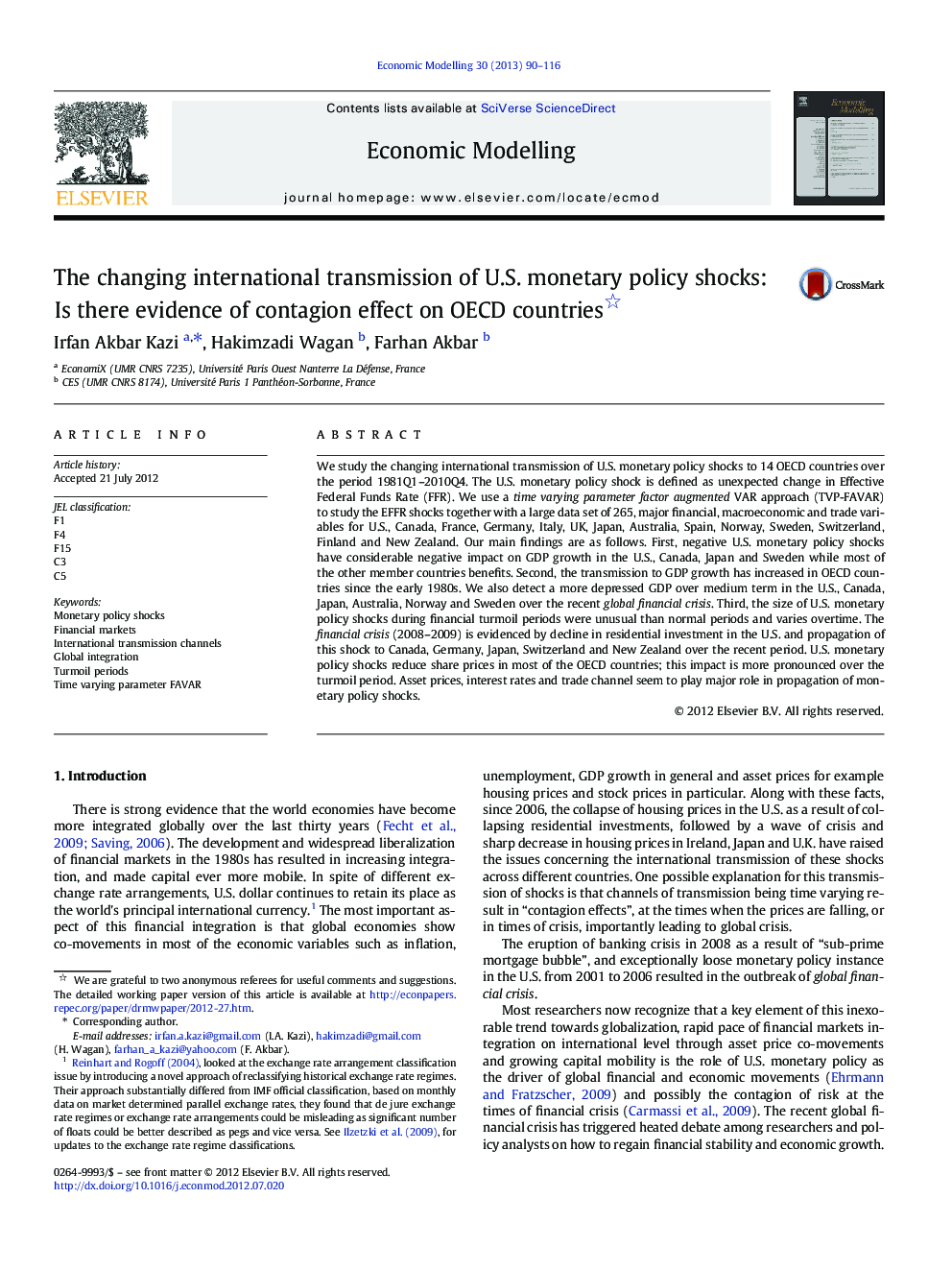| کد مقاله | کد نشریه | سال انتشار | مقاله انگلیسی | نسخه تمام متن |
|---|---|---|---|---|
| 5054694 | 1476538 | 2013 | 27 صفحه PDF | دانلود رایگان |

We study the changing international transmission of U.S. monetary policy shocks to 14 OECD countries over the period 1981Q1-2010Q4. The U.S. monetary policy shock is defined as unexpected change in Effective Federal Funds Rate (FFR). We use a time varying parameter factor augmented VAR approach (TVP-FAVAR) to study the EFFR shocks together with a large data set of 265, major financial, macroeconomic and trade variables for U.S., Canada, France, Germany, Italy, UK, Japan, Australia, Spain, Norway, Sweden, Switzerland, Finland and New Zealand. Our main findings are as follows. First, negative U.S. monetary policy shocks have considerable negative impact on GDP growth in the U.S., Canada, Japan and Sweden while most of the other member countries benefits. Second, the transmission to GDP growth has increased in OECD countries since the early 1980s. We also detect a more depressed GDP over medium term in the U.S., Canada, Japan, Australia, Norway and Sweden over the recent global financial crisis. Third, the size of U.S. monetary policy shocks during financial turmoil periods were unusual than normal periods and varies overtime. The financial crisis (2008-2009) is evidenced by decline in residential investment in the U.S. and propagation of this shock to Canada, Germany, Japan, Switzerland and New Zealand over the recent period. U.S. monetary policy shocks reduce share prices in most of the OECD countries; this impact is more pronounced over the turmoil period. Asset prices, interest rates and trade channel seem to play major role in propagation of monetary policy shocks.
⺠We use FAVAR and TVP-FAVAR model to study U.S. monetary policy shocks. ⺠The size of U.S. monetary policy shocks strongly varies overtime. ⺠U.S. monetary shocks to GDP growth has increased in OECD countries in recent years. ⺠Unusual transmission of U.S. monetary shocks is observed during turmoil periods. ⺠High interest rates prevailing in 1988 were responsible for S&L crisis.
Journal: Economic Modelling - Volume 30, January 2013, Pages 90-116